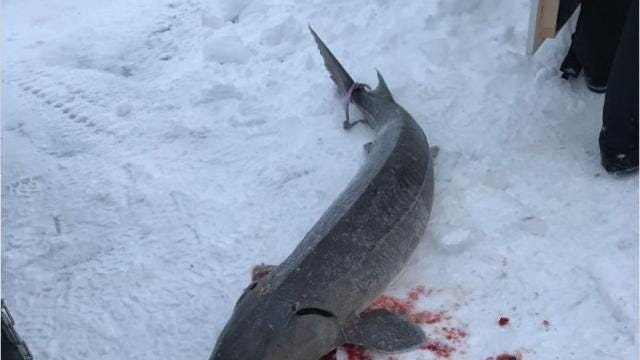
Sturgeons are native to subtropical, temperate and sub-Arctic rivers, lakes and coastlines of Eurasia and North America. dabryanus) may be extinct in the wild, and one ( P. The family is grouped into four genera: Acipenser (which is paraphyletic, containing many distantly related sturgeon species), Huso, Scaphirhynchus, and Pseudoscaphirhynchus.

They are one of two living families of the Acipenseriformes alongside paddlefish (Polyodontidae). The earliest sturgeon fossils date to the Late Cretaceous, and are descended from other, earlier acipenseriform fish, which date back to the Early Jurassic period, some 174 to 201 million years ago. So the witness called a buddy who told him to call the state’s CalTIP poaching hotline, Henderson said.Sturgeon is the common name for the 28 species of fish belonging to the family Acipenseridae. He knew that Tran had likely broken the law by failing to release it, but he didn’t know what to do to report the violation. The witness saw the green sturgeon’s distinct dark-emerald color as Tran hauled it out of the water, Henderson said. Anglers are required to make a note on their report cards of any sturgeon they catch, even if they’re released. They must be released while still in the water. Endangered Species Act, can’t be kept at any time.


Green sturgeon, which are protected under the U.S. All other whites are required to be released unharmed. The catching of each is heavily regulated, due in part to the rarity of the fish and the demand for the caviar - unfertilized fish eggs - that the females carry.Īnglers with state-issued sturgeon permits and reporting cards are only allowed to keep three of the more common white sturgeon each year, and only if they’re a certain size. There are two species of sturgeon - white and green - that swim in the rivers of California’s Central Valley.


 0 kommentar(er)
0 kommentar(er)
